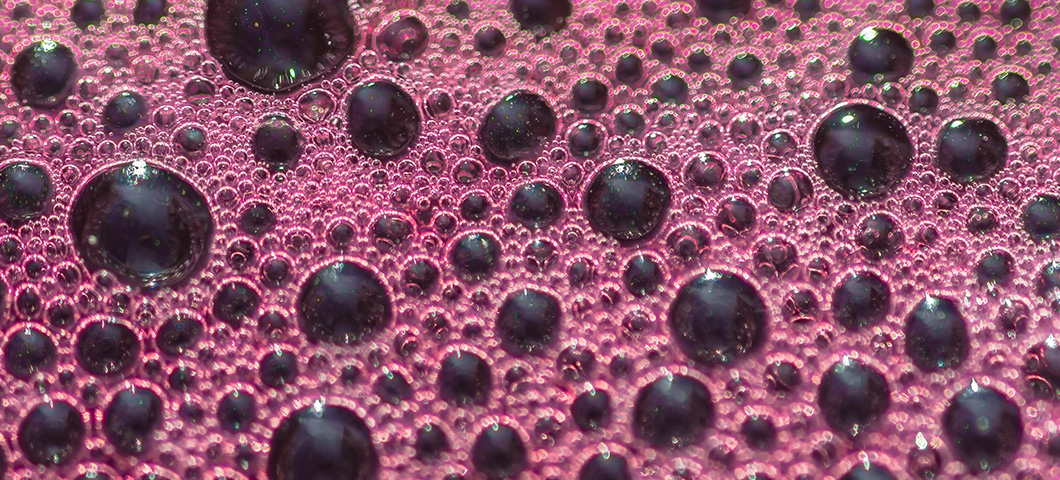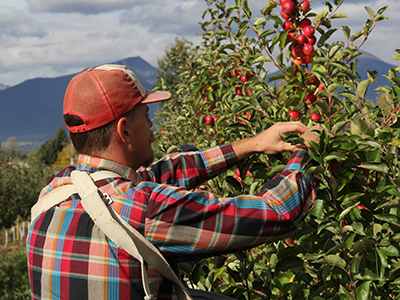Exploring Yeast Strains in Blackcurrant Winemaking
A website summary of Assessment of Sequential Yeast Inoculation for Blackcurrant Wine Fermentation (https://doi.org/10.3390/fermentation10040184).
By Zhuoyu Wang 1, Andrej Svyantek1,Zachariah Miller1*, and Aude A. Watrelot2
- Western Agriculture Research Center, Montana State University, Corvallis, MT, 59828,
USA; zachariah.miller@montana.edu (Z.M.)
- Department of Food Science and Human Nutrition, Iowa State University, Ames, IA 50011,
USA
* Author to whom correspondence should be addressed.
Summary
This 2022 study explores how different yeast strains influence the quality of blackcurrant wine. By comparing traditional Saccharomyces cerevisiae with two non-Saccharomyces strains—Torulaspora delbrueckii (Biodiva) and Metschnikowia pulcherrima (Flavia)—researchers examined effects on fermentation behavior, color, acidity, alcohol content, antioxidant capacity, and phenolic composition. The findings highlight how yeast selection can shape wine characteristics such as mouthfeel, aroma, and health-related compounds, offering valuable insights for cold-climate and fruit winemaking. Preliminary taste tests suggest that these alternative yeast strains did not provide large improvements in aroma or flavor.
Introduction
Blackcurrant wines retain many of the fruit’s beneficial compounds, including phenolics and anthocyanins, which are known for their antioxidant and health-promoting properties. These wines often contain over 1500 mg per liter of both antioxidant capacity and phenolic content, along with vitamins, minerals, and phytosterols.
Fermentation techniques can significantly influence wine characteristics such as aroma, appearance, mouthfeel, and antioxidant content. This study compared two non-Saccharomyces yeast strains—T. delbrueckii and M. pulcherrima—with a traditional S. cerevisiae strain to assess their impact on blackcurrant wine.
Biodiva, a commercial strain of T. delbrueckii, was selected because it can ferment on its own and is known to enhance wine aroma and complexity by producing esters, higher alcohols, and glycerol. It’s often used alongside Saccharomyces strains to improve color intensity and mouthfeel. Previous studies have shown that different ratios of Biodiva and S. cerevisiae (SafAle™ S-04) can influence the final product’s characteristics.
Flavia, a commercial strain of M. pulcherrima, was chosen for its ability to boost aromatic compounds like terpenes and volatile thiols. It can also reduce alcohol content due to its glucose oxidase activity. However, its low ethanol tolerance can affect fermentation speed. Despite this, M. pulcherrima has been shown to enhance glycerol levels, antioxidant activity, and color stability in various fruit wines.
Frozen ‘Stikine’ blackcurrants were thawed, juiced, and blended into a uniform mixture. Each fermentation batch used 500 grams of this mixture, combined with 0.5 liters of water and a blend of enzymes and microbial control agents. Potassium metabisulfite was added to provide 20 ppm SO₂, and the musts were left overnight at room temperature.
The next day, sugar content was adjusted to 22 °Brix using corn sugar and water, bringing the total volume to 3 liters per fermenter. This resulted in a blackcurrant concentration of 16.6% by weight.
Three fermentation treatments were tested, each in triplicate:
- Biodiva Treatment – Sequential inoculation with T. Delbrueckii (Biodiva), followed 48 hours later by S. cerevisiae (EC1118).
- Flavia Treatment – Sequential inoculation with M. pulcherrima (Flavia), followed 48 hours later by EC1118.
- EC Treatment – Single-strain inoculation using only EC1118.
Because blackcurrant musts are naturally low in yeast-assimilable nitrogen (YAN)—a key nutrient for healthy fermentation—Go-Ferm Protect was added with the initial yeast to support yeast viability during rehydration. Fermaid O, a nitrogen-rich nutrient blend, was added three days after EC1118 inoculation to ensure complete fermentation and prevent sluggish or stuck ferments.
Wines were racked twice—once when sugar levels dropped near zero, and again after fermentation for clarification. A final dose of 50 ppm SO₂ was added before bottling.
Fermentation Dynamics
- All treatments fermented sugars effectively, but Biodiva was slower than Flavia and EC1118 alone, especially after the first week.
Color Development
- Biodiva wines started darker but became brighter over time, with lower final red and yellow pigment values.
- Flavia and EC1118 produced more stable red hues.
- All wines became visually brighter after two months of storage.
Acidity and pH
- Biodiva wines had the lowest pH (3.23) and highest titratable acidity (6.91 g/L), contributing to a tangier, more vibrant profile.
- EC1118 wines had the highest pH and lowest acidity, resulting in a softer mouthfeel.
Alcohol and Glycerol
- EC1118 alone produced the highest ethanol content (~13.4%) but the lowest glycerol (~7.2 g/L).
- Biodiva and Flavia both led to slightly lower alcohol and higher glycerol, which can enhance mouthfeel and perceived sweetness.
Antioxidant Capacity
- All wines had similar antioxidant activity (105-107 µM TEAC), regardless of yeast strain.
- Some non-Saccharomyces yeasts are known to boost antioxidant compounds; however, this study found no significant differences in overall antioxidant strength.
Phenolic Profiles
- Biodiva wines had the highest anthocyanin and hydroxycinnamate levels, enhancing color and potential health benefits.
- EC1118 wines had more flavanols, which influence structure and astringency.
- Flavonol and nonflavonoid levels were not significantly affected by yeast treatment.
Figure 1. Monophenolic composition of blackcurrant wines produced using three fermentation treatments: Biodiva + EC1118, Flavia + EC1118 (both sequential inoculations), and EC1118 alone (single strain). Each bar represents the average level of individual monophenols, with error bars showing variability across three replicates. Bars labeled with the same letter are not significantly different (p > 0.05). Different colors represent categories of monophenols, while variations in hue and lightness indicate compound groupings and statistically significant differences, respectively.
Conclusions
This study shows that yeast selection affects blackcurrant wine quality. Depending the winemaker’s goals, different strains offer different advantages:
- Biodiva + EC1118: Best for enhancing color, acidity, and complexity. Ideal for vibrant, structured wines with a tangy finish.
- Flavia + EC1118: Offers a balance of smooth mouthfeel, moderate phenolic retention, and potential aromatic lift.
- EC1118 alone: Produces higher alcohol and a more traditional fermentation profile with softer acidity.
All treatments produced wines with acceptable pH and acidity for stability and aging, especially important when working with diluted musts in cold-climate winemaking.
Lab tests can detect differences that may be undetectable by wine drinkers. Preliminary taste testing did suggest that the addition of Biodiva or Flavia did NOT provide improvements in aroma, taste, and overall impression of the wines. Wines were tasted by 11 Montana fruit growers and wine makers. Ratings of aroma, taste, and overall impression were similar among these three black currant wines.
Funding Acknowledgement
This research is funded by the Montana Department of Agriculture. Grant No.: 23SC00309.


